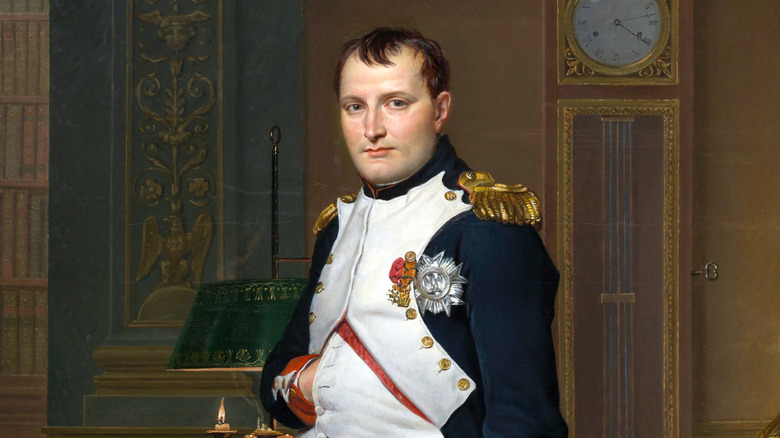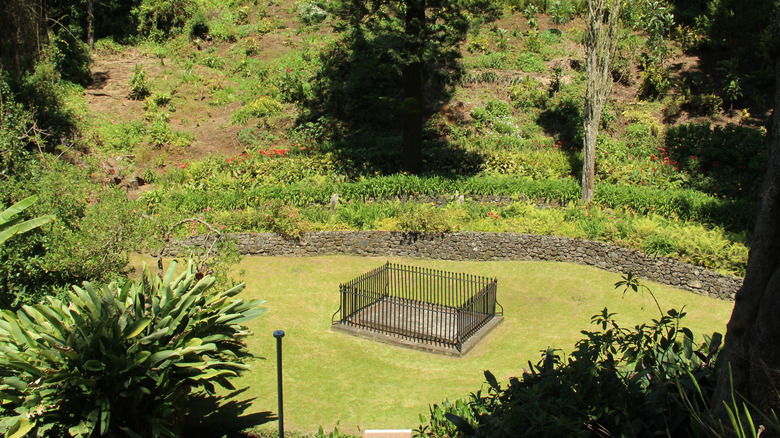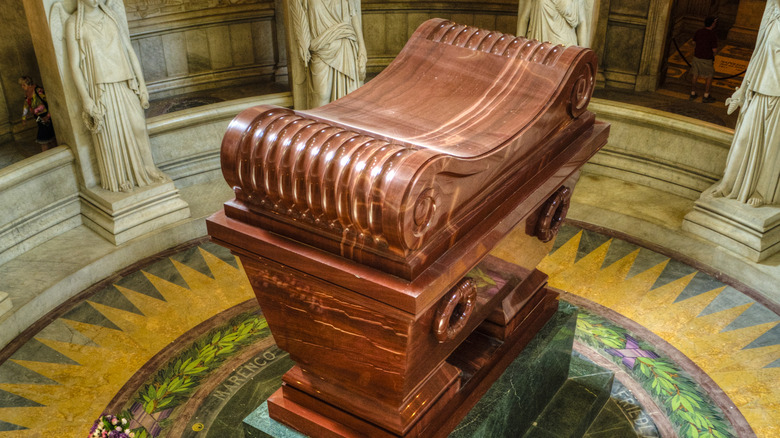Here's Where You Will Find Napoleon's Grave
The funeral procession and the grave were relatively simple for an emperor. But then Napoleon I had been in exile on the British territory of St. Helena, a small island in the South Atlantic Ocean, when he died on May 5, 1821, according to "Terrible Exile: The Last Days of Napoleon on St Helena." Following a simple funeral service, 12 uniformed French soldiers led the hearse, the few of his faithful generals who went into exile with their leader, and his staff, to the graveside. They slowly lowered the casket into the ground as British warships let loose with volleys of cannon fire in Napoleon's honor.
But you won't find Napoleon's remains there. In the spring of 1840, nearly 20 years after they buried him on the island, Prince de Joinville, the son of Louis Philippe, France's king under the July Monarchy (1830-1848) sailed from France to return Napoleon's remains to his homeland, per Napoleon.org and Britannica. They buried Napoleon again, this time in the Chapel of St. Jerome in Paris, per National Geographic. But you won't find his remains there either. In April 1861, following the 20-year construction of his grand tomb at the Chapel of Les Invalides, they laid the former emperor to rest for the last time.
Burial in St. Helena
Napoleon's last wish was to be buried "on the banks of the Seine, in the midst of the French people, whom I have loved so well," according to his will (via Napoleon.org). The British, who'd exiled him to St. Helena, didn't want that to happen, but they allowed the French to bury Napoleon on the island at a peaceful spot near a stream and a stand of willow trees in an area called Geranium Valley, per "Terrible Exile."
They even fought over what should be on the tomb. Napoleon's generals wanted a simple inscription with "Napoleon" and his birth and death dates, but the British wanted "Bonaparte," his surname, which he dropped after becoming emperor, added to the inscription. And so they left the headstone blank. In 1840, the British agreed to allow the French to bring Napoleon back to France. The journey, which became known as the "Retour des Cendres," ended on December 15, 1840, with the arrival of Napoleon's remains in Paris.
Les Invalides
On December 15, 1840, all of Paris came out to watch Napoleon's majestic funeral procession made up of 80,000 soldiers that wended its way through the city's streets, under the Arc de Triomphe, and ended at the Hôtel des Invalides, a soldier's hospital and home, according to "Napoleon and de Gaulle: Heroes and History." They interred Napoleon's body in the Chapel of St. Jerome at Les Invalides until they built his final, final resting place.
King Louis Philippe assembled a committee, which included the famous French painter Jean Auguste Dominique Ingres, to oversee the building of a tomb worthy of Napoleon, per Napoleon.org and "As Befits a Legend: Building a Tomb for Napoleon, 1840-1861." They chose the architect Louis Visconti who worked on the funerary project at the Chapel of Les Invalides until his death in 1853 with two other architects completing the project. Finally, on April 2, 1861, they interred Napoleon's remains in a raised red stone sarcophagus at the center of a circular crypt surrounded by statues and paintings, including one by Ingres, depicting Napoleon's victories.


